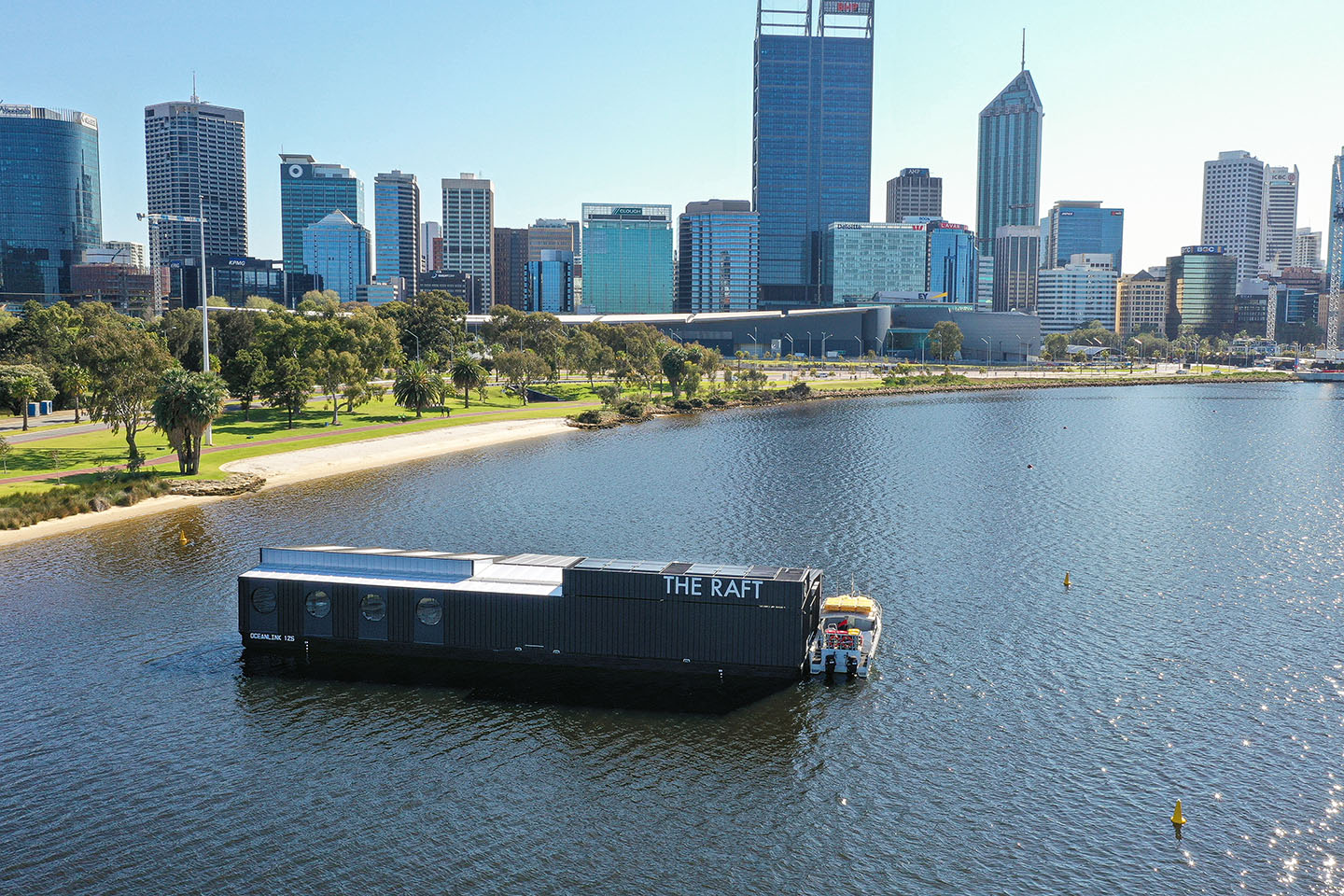Allowing retailers to choose their opening hours and rethinking rules around tenancies, pop-ups, and approvals could help bring life back to Perth CBD.

A discernible silence has fallen over Perth’s shopping malls most Friday evenings.
The COVID-19 winter has taken an axe to CBD life after office hours, and data shows the impact.
(click here to view a PDF version of the full 12-page liftout)
Movement in Perth CBD in August was 24 per cent below pre-COVID-19 levels, according to Roy Morgan.
Google mobility data suggests retail and recreation activity in the City of Perth is 29 per cent below baseline.
But as the spring weather warms and with summer just around the corner, community leaders have the opportunity to dust off some old ideas and burnish them with fresh initiatives to bring a vibrancy back to Perth.
One idea is the need to make better use of the Swan River.
The Raft’s Katie Chrystal told Business News the new venue she co-founded with her brother Dan had been motivated by the low level of river use.
Launched in September, The Raft is a floating events space moored on the river.
“We grew up in Perth around the water, around boats,” Ms Chrystal said.
“[We see] how beautiful the Swan River is … yet in Sydney, Melbourne, the water is used so much more.
“Sydney has The Island [events space], Melbourne has Arbory Afloat.
“We have better weather than both Sydney and Melbourne.”
Other initiatives to make better use of the waterway have included the Swan River Deck swimming pool, which was proposed in 2019, and ferries to the Perth Stadium, which started operations in 2018.
Pan Pacific Hotels Group general manager Rob Weeden said a further example would be a small marina in the Swan River, with floating pontoons, towards the eastern end of Langley Park.
Recreational boats could use the pontoons to access the city.
That would be one way to improve use of the park, Mr Weeden said, which was underutilised.
Simple moves like introducing rugby or soccer goal posts could also promote use, while building an amphitheatre at the park would support musical acts, he said.
The story of creating The Raft provides a second lesson, this time about approval processes.
Ms Chrystal said approvals for the venue had taken two years and involved about 10 agencies, although she appreciated their interest in, and support of, the project.
“Everyone is coming at it from a different perspective,” she said.
“It makes sense that everyone wants to get involved.
“But it is very taxing, financially and mentally.”
More broadly, the Tourism Council of WA last year said the high cost and time needed to secure approvals was delaying a range of potential projects.
Among the projects delayed were climbing equipment on the Matagarup Bridge and a potential zipline across the river, but the state government said both were moving ahead as at June 2020.
On land, Activate Perth has been working to bring vibrancy to the city through the #fillthisspace campaign, which offers short-term tenancies in empty buildings to hopeful entrepreneurs.
Activate chief executive Kylie Taylor told Business News the campaign helped fill the need for creative spaces and reduced the high commercial vacancy rate in the city.
One change that could help small businesses would be altering the Commercial Tenancy Act requirement that tenants take a five-year lease once they have operated in a space for more than six months, Ms Taylor said.
It led to some businesses needing to close temporarily to reactivate leases, she said.
Ms Taylor said 12 months would be a more appropriate timeframe.
“Times have changed, it’s outdated,” she said.
Activate has also advocated for the abolition of alfresco fees for restaurants, and free parking trials in West Perth.
More broadly, Ms Taylor said the city needed to offer unique retail opportunities that differed from large suburban shopping centres.
That would mean experiential offerings, with light, art, music and colour.
Pan Pacific’s Mr Weeden said lighting would be particularly important on Adelaide Terrace, where he said about 50 per cent of the city’s five-star hotel rooms were located.
To this end, the Pan Pacific has illuminated the gum trees outside its entrance.
But Mr Weeden said more could be done to appeal to visitors.
“There’s [still] not enough lighting on the street,” he said.
Another simple move would be to erect more statues on Adelaide Terrace, similar to St Georges Terrace.
“I’d love to see Dennis Lillee off a long run in front of my hotel,” Mr Weeden said.
“Let’s dress this city up and be serious about the precincts.
“It doesn’t take that much to dress it up.”

24-hour life
The retail trading hours debate in Perth has been a long-running saga.
Although a 2005 plebiscite on extending trading hours failed, a survey by Painted Dog Research released in January 2020 found 74 per cent of Western Australians supported deregulation.
Men aged 18 to 36 were strongest backers, with 86 per cent wanting greater choice.
Work by the Economic Regulation Authority in 2014 compared transaction data in WA to NSW and Victoria and found it was likely that consumers’ shopping habits were being affected by trading hours restrictions.
“[A] sharp rise in transactions after opening and steep fall upon closing demonstrates that there is significant demand for trading before and after these times,” the report said.
This also affected retailers, the ERA said, with businesses needing to invest in greater upfront capital costs to have capacity to deal with higher demand spikes caused by the restrictions.
A discussion paper by the Bank of Italy published in June analysed the ongoing deregulation of trading hours in that country, and found moving to 24-7 retail trade increased jobs by 3 per cent.
The number of shops increased by 2 per cent.
On the east coast, the NSW government recently released its plan for a 24-hour economy in that city, with extended opening hours for retailers a consideration.
One of the top recommendations was to improve transport reliability, and safety, connecting what the report called 24-hour economy hubs.
In Perth, most rail lines have two services after midnight on Friday and Saturday evenings, around 1am and 2am.
The Public Transport Authority had trialled a 4am service, which was discontinued due to low patronage.
In the first five months of the trial, 900 people used the service every weekend, with Friday evening (Saturday morning) services the first to be discontinued due to low patronage.
Overseas, London’s recent move towards extending underground rail operations at night was partly motivated by serving tourists, including through improved access to the airport.
Hospitality red tape
Among the NSW government’s recommendations in its 24-hour economy report were: streamlining liquor licensing rules; reviewing regulations around loud music and noise; and relaxing restrictions for pop-ups and food trucks.
All could equally apply in WA.
A more radical suggestion might come from contrasting rules in Perth with other international cities.
In tourist hotspots such as New Orleans, public drinking is legalised under certain circumstances.
According to a House of Commons briefing paper in September 2019, there was no general prohibition on drinking in the street in England and Wales, although protection orders could be used to prohibit drinking in some places.















